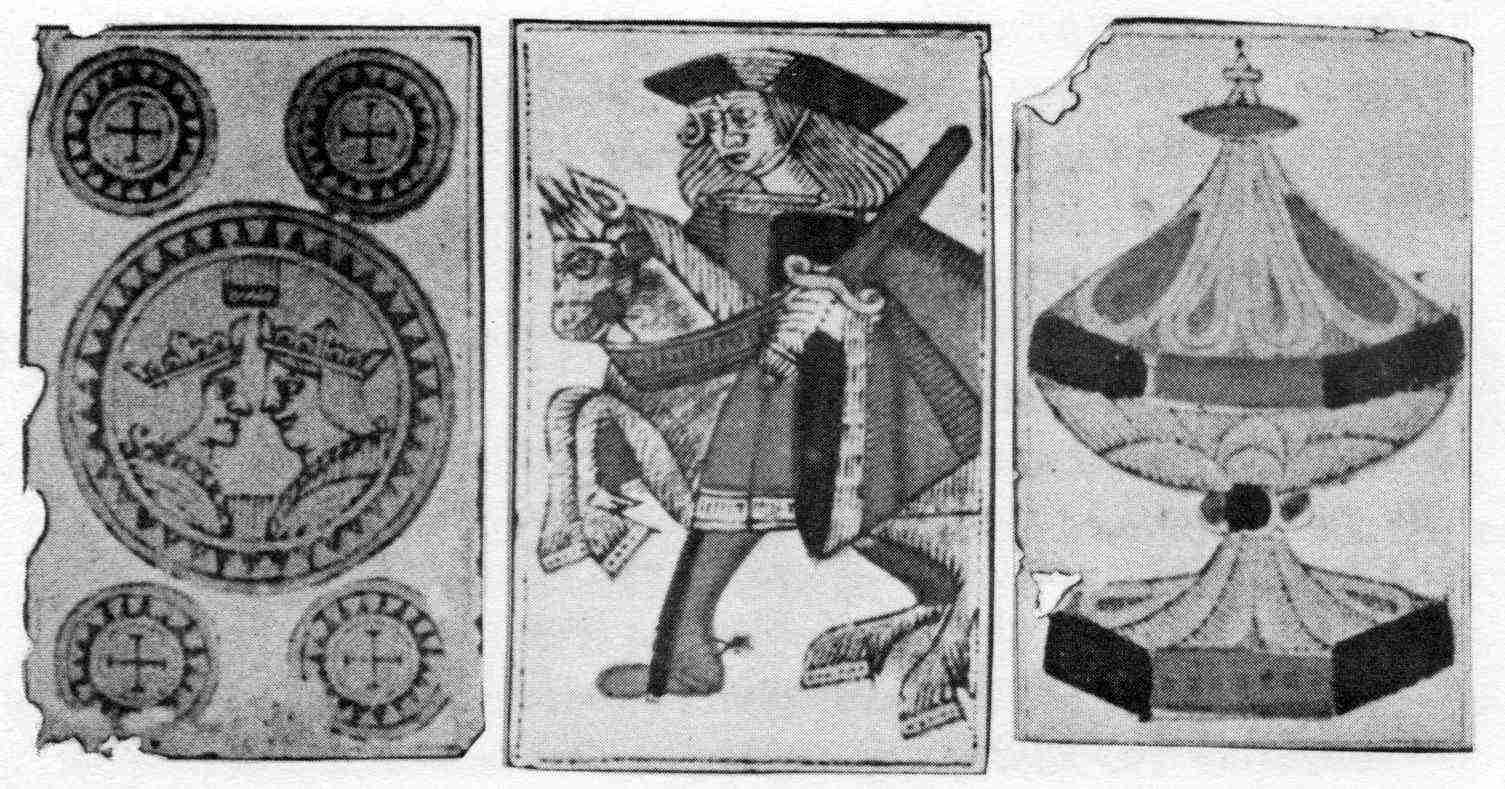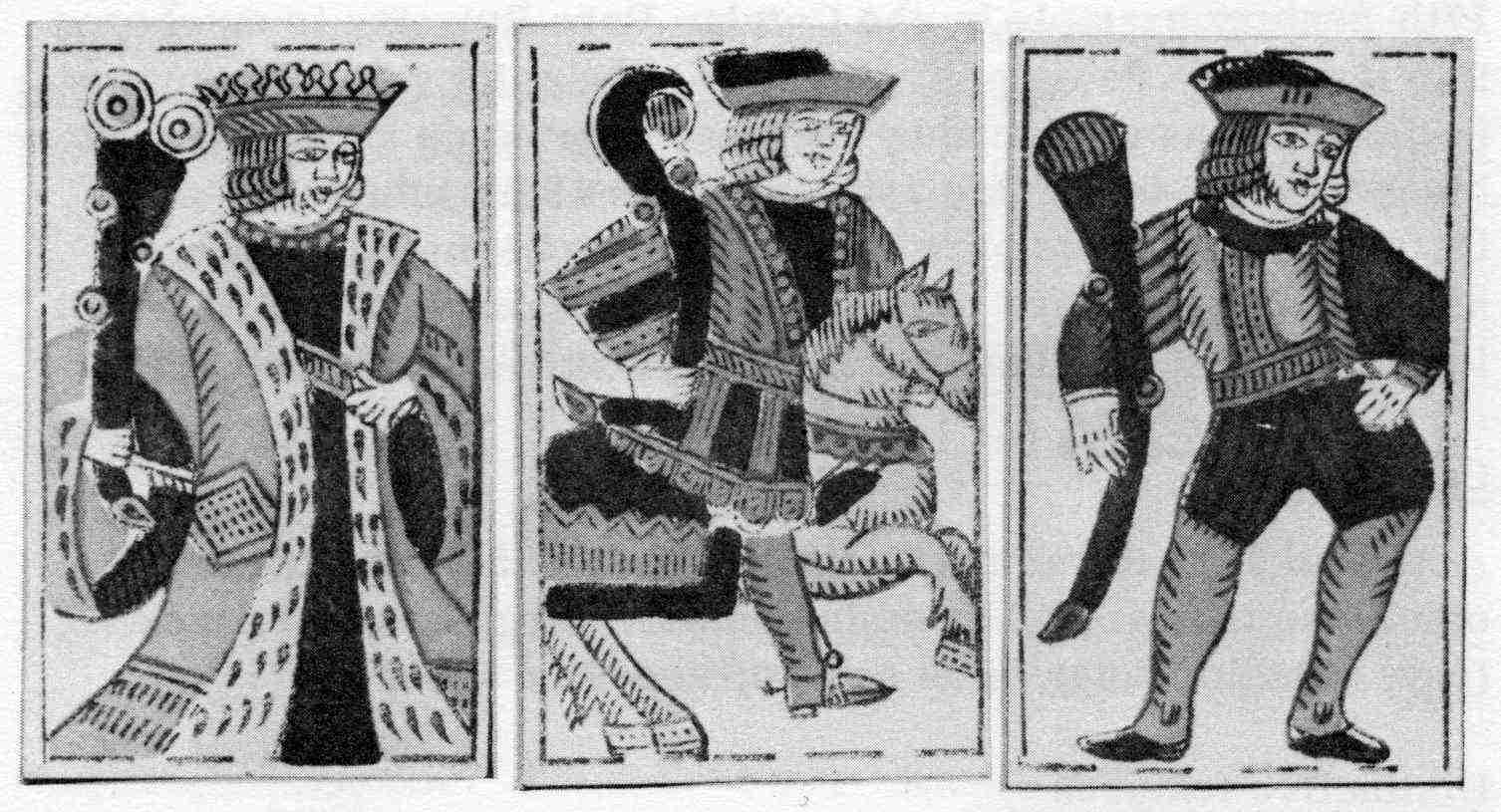

| Suit System: | S |
| Recommended Name: | the Spanish National pattern. |
This pattern was originally classified as S-1.1.
Names proposed by researchers and cataloguers to distinguish this pattern have
included Archaic, Andaluz, Marseille/Madrid, National, Provincial. As the design is
neither uniquely archaic nor attached to a particular region the term
"national" seems the most appropriate to adopt.
Although playing-cards were reported in Spain in 1380, comparatively few examples have survived from before the 18th century. On the evidence available it is not certain to what extent, if any, the type we now regard as "Spanish" was used in Spain before 1600. In the 17th and 18th centuries Spanish cards took two or three slightly different forms. The "national" pattern is the only one of these to have remained in use to the present day. A complete 17th-century example by the Catalan Pere Rotxotxo is numbered 9 in the Museo de Naipes, Vitoria. The pattern is well-known in the versions produced by the Real Fabrica de Madrid and de Macharaviaya in the late 18th and early 19th centuries. After that the design in its pure form ceased to be made in Spain at all, but was continued to be made by the French, who produce it for use in North Africa, and by some South American countries.
Around 1800 it was not uncommon to find 52-card packs; otherwise they are 48 or 40 in number: king, cavalier, jack (rey, caballo, sota), plus ace-10, ace-9 or ace-7.
Kings' feet are hidden by robes; no beards. In the batons suit the king's club is forked, the cavalier's S-shaped and the jack's funnel-shaped. From the mid-18th century "AHI VA", "AHIVA" or "AIVA" often appears at the base of the cavalier of coins. All horses are rearing, none in back-view. Ace of coins: usually a central coin with simple formal ribbons above and below.
Pere Rotxotxo (Cataluña), 17th century;
Real Fabrica de Madrid and Real Fabrica de Macharaviaya (Malaga), 18th to 19th centuries;
Jacques Sellon (Marseille), 17th century;
A. Camoin (Marseille), B.P. Grimaud (Paris), 19th to 20th centuries;
"La Ducale" (J.M.Simon, Nancy), "L'Elephant" (Belgium), Malka Frères (Casablanca), "El Heraldo" (Ecuador), 20th century.




| Upper two rows: Pere Rotxotxo, Cataluña, 17th century; third row: Real Fabrica de Madrid, 1792; bottom row: Malka Frères, Casablanca, c.1970. |
| The International Playing-Card Society | May, 1979 |